History yr 10
1/89
There's no tags or description
Looks like no tags are added yet.
Name | Mastery | Learn | Test | Matching | Spaced |
|---|
No study sessions yet.
90 Terms
Name the timeline of the British colony.
1800 - The end of the French blockade and the French leave Malta.
May 1802 - The treaty of Amiens and the Maltese wrote their Civil Rights.
June 1802 - The start of Napoleonic wars and the treaty of Amiens was no longer valid.
1813 - The end of Napoleonic wars and the treaty of Paris where Malta becomes of British Colony.
Name the differences between the Maltese and British aspirations.
The Maltese have a government elected by the people and Malta wants to be a British protectorate meaning not under direct British rule.
The British thinks that Malta has a strategic position in the Mediterranean and wanted to have complete control to use it for their needs.
Name the island fortresses of Malta, where its located and its functions.
The office of the Governor - During the British rule the palace of the Grandmasters, Valletta, served as residence and office for the British Governors.
The Main guard - Its located in St. George Square, Valletta was used for military parades to emphasize British colonial power.
Military Barracks - The British Military Services used to live in barracks spread across Malta such as, Mtarfa, Pembroke, Beltissebħ.
Naval & Military Base - The Grand Harbour was the HQ’s of the British Navy and many ships used in the dockyard as well, many more fortresses were built around the harbours.

The Comitato Generale Maltese
This was formed in 1830 by a group of Maltese politicians, they’re founding fathers of this committee which were, Camillo Sciberras and Giorgio Mitrovich. Its aim was to give a voice to the Maltese so they would have a say in the government of their country and form the Consiglio Populare (Council of Government). They used to meet in the club named ‘La Giovanne Malta’ in Valletta.
Protectorate
A land protected but not ruled by another country.
Colony
A land governed by another country.
The Maltese Flag in the 19th century.
The Maltese flag was with the Union Jack symbolizing that Malta was a colony and not a free state.
Name the effects of Colonial Administration.
Political effects - A patriotic/nationalistic movement was developed to fight for Maltese civil & political rights that led to political & administrative reforms.
Economic effects - Many Maltese were employed with the British Services such as, the dockyard and many Maltese farmers, merchants, shopkeepers, barmen owned their living to the British soldiers and marines stationed in Malta.
Social effects - The Maltese, especially those of the Harbour Area were influenced by the British traditions, ideas, language and lifestyle and there were zones reserved exclusively for the British military such as, Pembroke.
Governor
A person chosen to govern a colony, often, they have the same nationality of the state ruling the colony.
Naval base
A place that mend and protects military vessels.
Nationalism
A political movement based on the rights and identity of people.
Constitution
Its the highest law of a state which regulates how a state is governed and the states details of how this government should work. If someone breaks the constitution, he goes against the will of the people.
Council of Government
A type of council for governing the country made of elected and nominated members.
The Consultative council of 1835
The first constitution given by the British. The Council of Government was a consultative one meaning they couldn’t make laws and it was made up of 7 members but only 3 of them were Maltese and all members were nominated from the governor.
Giorgio Mitrovich went to London and in the House of Commons, which was the British parliament and read a petition stating that the Maltese weren’t happy with the constitution, so the British Government sent a royal commission to write a report on the political, social and economic situation in Malta.
The Liberty of the Press
Camillo Sciberras and Giorgio Mitrovich worked and helped Malta gain the Liberty of the Press and in 1893, during the governship of Bouvarie, Malta was given the Liberty of the Press. Meaning, censorship was demolished and freedom of expression on media was given which is a fundamental right in every democratic country. Libel law was also introduced which is the right to sue someone who defamed you.
The 1849 Constitution
Finally, the British Constitution decided to give Malta a new constitution in 1849 although it wasn’t democratic as most Maltese didn’t have the right to vote. The Council of Government consisted of the governor, 10 nominated members, 5 of which were Maltese which are members chosen by the people and 8 elected members which were all Maltese and are members chosen by the governor.
The way it worked was that for every decision, law or budget all members had to vote and the vote passes with the will of the majority although the Governor could use a veto which is a vote used by the Governor against the will of the majority.
It’s negative aspects were that there are more nominated members then elected ones and so the majority always sided with the governor and the Veto went against the democratic principle of the will of the majority.
It’s positive aspects were that the Maltese had a say in the running of their country as they were given the right to vote but only the Maltese educated upper class men who amounted to just 3000 and the Cardwell principle balanced out the power of the Veto during budgets so it couldn’t be used.
The 1921 Constitution
This government was formed with only elected members for the first time and election takes place every 4 years, the parliament is made up of the House of Representatives and the senate (bi-cameral) which is chosen by the people meaning it was a self/responsible government meaning the Maltese government ran the country without British interference.
The way it worked was that for bills to become law the Senate had the last say, the British government kept control of the reserved matters and the Maltese Government had control on local matters like taxes, education, health, justice and industry.
It’s negative aspects were that there were problems to pass laws if the Senate which is a group in the House of Representatives and the House of Representatives (Parliament) themselves don’t agree, not all issues were under Maltese control so, reserved matters meaning affairs of state that remined in British hands after 1921 like defence, harbours, passports and like 1849, only a section of the people had the right to vote.
While it’s positive aspects were that the Maltese controlled the issues which affected directly like education and health and the most democratic constitution was also up to them.
Sette Giugno
Took place on 7th June of 1919 where a welcoming crowd in St. George square was found who burnt the building of the Daily Malta chronicle, after they then entered the Union Club where they destroyed everything and the houses of wheat importers like Cassar Torreggiani and Francia were also attacked. To calm down the situation British marines went armed in the streets of Valletta as the local police couldn’t control the crowd, the British began firing at the civilians and ended up killing up 3 men Wenzu Dyer, Manuel Attard and Guzeppi Bajjada. The next day the same protest repeated causing for the British to fire shot again this time injuring Karmenu Abela.
Causes of the Sette Giugno of 1919
A constitution which didn’t give rights to the Maltese,
the increase in price of food products like bread and taxes on cinema and theatre and 10% duty on wills,
unemployment/rundowns form dockyard,
differences in the wages between Maltese and British Workers,
university courses were extended by one year and the influence of Maltese anti-colonial newspapers which means being against the idea that a country should be ruled by a foreign power.
Riot
when the people are unhappy with the political situation of their country and so rebel against their government.
Assemblea Nazzionale
A group of Maltese politicians who worked for the 1921 Constitution.
Viscount Plumer’s Measures
Governor Plumer sympathised with the Maltese, he declared a state of emergency, and he censored the newspapers, prohibited Political demonstration set up a commission to investigate the causes of the riots, arrested the ring leaders, subsidised the price of bread and started a programme of public works like building schools, to decrease unemployment.
The consequences of the Sette Giugno
4 Maltese died, the price of bread decreased, increase of public works, newspaper censorship, MUT the teachers union was set up, the Camero del Lavoro was set up in 1920 which then evolved into the labour party and the 1921 Constitution was formed.
The Sette Guigno today
The Sette Giugno is commemorated every year and is one of the five national feasts of the Maltese, as it resulted in the first Maltese parliament and so its the feast of the Maltese parliament.
Neo-Classical Architecture
This was inspired by the archaeological excavations of Pompeii and Herculaneum in the mid-18th century.
Examples, Bighi Hospital, Kalkara and Garrison Church, Valletta.
The Neo-Classical Architecture’s main characteristics.
It’s very popular in 18th century Italy and France, it was copied from the Ancient Greeks, consists of Greek columns, Donic, Ionic, Corinthian, a central triangular portrico on the facade and its symmetrical and proportional.
The Neo-Gothic’s main characteristics.
It’s popular in England, towards the end of the 19th century, copied from the Gothic style of the Normans, had its roots in the religious revival of the 19th century, consists of high buildings with pointed triangular shapes, rose windows, gargoyles.
Examples are Addolorata Cemetry, Methodist Chapel Floriana and Chapel of the Holy Trinity, Sliema.
A prominent Maltese Neo-Classical architect.
Giuseppe Bonavia.
A prominent Maltese Neo-Gothic architect.
Luigi Galizia.
Other examples of British Influence on Maltese Architecture.
Rotunda, Mosta, Main Guard, Valletta, Balluta church, Sliema, Casa Gourgion Mdina.
Causes of the lack of Sanitation in Malta.
Lack of good infrastructure like, lack of water supply in homes led to lack of hygiene, no drainage system led to drainage being throw in the harbours and the overcrowding in the slum areas of Cottonera and Valletta especially Manderaggio which led to the spread of diseases.
Poverty like, poor diet and lack of nutrition led to many deaths especially in infants and people couldn’t afford to pay a doctor or buy medicine.
Lack of Knowledge like, there wasn’t an effective cure for diseases like tuberculosis and lack of education in hygiene and prevention of diseases for example many villagers used to live with animals which carried all sorts of viruses.
Sanitation
Conditions of health and hygiene.
Life expectancy
The average age that a person can live, and nowadays in Malta it’s 82.
The infectious diseases from the Knights Era to 1945
The plague, caused by a virus found in rats and usually spread from one country to another through commercial ships that carried infected sailors and during the British period it broke in 1813 and killed 5000 people.
Cholera, it’s main cause was infected and unhygienic water due to lack of drainage system, it broke out in 1837, 1865 and 1887.
Undulant fever, was discovered by Sir Temi Zammit that the virus was found in the urine, blood and milk of goats leading to milk to began to be pasturized to kill the virus and it was very common and killed hundreds of people.
Smallpox, caused mainly by malnutrition and led to death especially among the poor, due to a lack of nutritious diet to help them combat the illness.
Different Hospitals in Malta from the Knights’ Era to 1945.
The Sacra Infermeria which was a state of the art hospital of the Knights and was used up by the British until 1920.
Lazzaretto which was built by the knights on Manuel island to cure infectious diseases and was still in use during British Era.
Mount Carmel which was a mental hospital built in 1861.
St. Luke’s which was build in 1930 as a general hospital and continued to serve until replaced by Mater Dei in 2008.
How a better Public Health System developed in Malta.
In the 1800’s a few improvements were made in sanitation like the sewage system which started in 1870s, the water systems in homes and a holistic sewage system helped to improve hygiene.
The spread of education helped increase awareness of prevention of diseases and also, a programme of vaccinations started in schools to prevent illnesses.
There was an increase in health services like polyclinics, clinics in different districts, free pills for the elderly and other social aid, additionally the public hospital also offers free service so that all social classes receive the same care.
Fortress economy
This a term used by historians to describe the type of economy Malta has during the British rule as during the British period Malta became a naval base and developed a fortress economy. It meant that Malta depended on the military British services like the army, the navy and the Airforce which were stationed in Malta. This resulted for Malta’s economy had economic booms in times of war and economic recessions in time of peace.
Economy
Is how a country produces wealth.
Rundowns
termination of work that the British Government gave to dockyard workers due to unemployment.
Different jobs that linked the British Services
The Dockyard which employed a great number of Maltese for the maintenance of military ships.
Businesses where Maltese and foreign business men opened many businesses linked with importation of military products for the British officers stationed in Malta and the British presence fuelled the economy of the ports since many restaurants, bars and entertainment areas were opened there.
Agriculture since the farmers also benefitted as they sold their products to the British and the fruits, vegetables and meat produced were bought by restaurants or pubs.
Other workers since there were many others that directly or indirectly worked with the British services like drivers, cleaners, massagers, mechanics and shippers.
The Maltese economy after World war 2.
After World war 2 the Maltese economy was destroyed, the British were firing people and started dockyard rundowns and as the Maltese Government realised that the British planned to leave Malta it started preparing to shift the economy and create new jobs unconnected with the military services.
Name the transport during the Times of the Knights
Kaless which was used by the upper class and looks like a karozzin but the coachman walked alongside the horse.
Cart which was used mostly by farmers and was mostly pulled by a donkey and was used mainly to carry agricultural products.
Sedan chair which was a decorated wooden box with 2 horizontal bars to be carried by 2 people mostly slaves and was used by the Grandmaster and the Inquisitor for short distances while for long distances a carriage was used.
Dghajsa tal-pass which was used mainly by sailors to disembark and go to shore or to carry people to and from across the harbour but today it’s mostly used by tourists.
Transport in the British period.
Omnibus was bigger than the Karozzin, it could carry 16 persons but stopped being used in 1890.
Karozzin which was hired by the Maltese to go from one place to another but today it’s used by tourists.
Bicycle which was used mainly by dockyard workers to go to work.
Tram which was introduced in 1903 and had 3 routes to Bormla, Birkirkara and Haz-Zebbug which all started from Valletta and used electricity.
Train which was introduced in 1833 and stopped being used in 1931 it had one route from Valletta to Mtarfa and the wagons were divided into first and second class.
Tal-linja which was introduced in 1905 and had many different routes and the tickets were cheap and made the train and tram obsolete.
The advantages and disadvantages of the train.
Train
Advantages: Had a ticket for 1st and 2nd class.
Disadvantages: Only had 1 route from Valletta to Mtarfa.
The positive effects of transport on society.
The locations far away from the centre became more accessible and it was faster to arrive at the destination,
public transport villages like Birkirkara became more accessible leading to a population increase and expansion of suburbs around the harbours,
More people went to Valletta to work, for errands and leisure due to the tal-linja was cheap and efficient,
development of transport led to better infrastructure with wider roads with tarmac.
The negative effects of transport on society.
Public transport passes through the main roads where there’s more traffic and so arrives late,
some villages expanded so much that certain zones aren’t reached by public transport,
More people are using private transport which cause more traffic, pollution and lack of parking,
a lot of land including agricultural land was taken to widen roads,
Malta’s public transport is based on Tal-linja which isn’t as efficient as before leading people to use private transport.
Ways to move forward with transport.
The idea to increase flyovers to disperse traffic, metro systems or underground systems or a tunnel between Malta and Gozo.
Main celebrations in the knights’ era
Carnival, 3 days before lent, consist of great celebrations especially in Valletta, even the knights took part.
St. John the Baptist, the patron saint of the Knights, its feast is on 24th June and a procession from the Co-Cathedral and onfires are held.
Mnarja, is the feast of St. Peter & St. Paul on 29th June, the agrarian feast in Buskett, Rabat an horse races in Saqqajja, għana and fenkata
Victory Day, takes place on the 8th of September to commemorate the Great Siege, regatta races attended by Grandmaster and are very popular with the people of the harbour area, Cottonera, Kalkara and Marsa.

The Importance of Religion in Maltese Leisure Pursuits
As during the Knights’ period Malta was a Theocracy, which means it was governed by a religious order meaning religion was important resulting for the Maltese to be deeply religious. Many of the feasts were religious ones like Christmas, St. Paul on 10th February, Ash Wednesday and Passion Friday, Easter, and 1st November, All Souls’ Day. As well, village feasts and on the 15th August Malta celebrates the feast of Our Lady (Santa Mary) which gained importance after the Second Word War.
Leisure and Social Classes
Some leisure pursuits were common among all social classes, while others were different.
Examples; hunting was a pastime for both nobles and poor,
Villagers - Mnarja was an agrarian feast and so was more popular with the villagers especially the horse races in Saqqajja, clubs, marches and bocci.
Working class - regatta was very popular with the working class, like those who worked in the dockyard and harbour.
Upper and middle classes from the cities - preferred classical music, theatres, baptism parties and opera, gratunell, embroidery and lace-making.
Differences of Carnival in the past and in the present
The floats - they became bigger, more colourful and with technology they are now mechanical, use lightings etc, they are making satirical floats that make fun of political personages or social issues which were banned in 1936 and re-introduced in 2013.
Dancing and costumes - dancing became competitive, not just for fun, before costumes were simple and people celebrated carnival in a more spontaneous way while today, costumes are more elaborate and more expensive.
Spontaneous carnival - the Nadur Carnival is still spontaneous but it is becoming more and more as a tourist attraction, carnival was present in several villages with masked people running along the streets, but today the focus is in Valletta and Rabat, Gozo, today masked parties are becoming more popular in entertainment venues.
Difference of the Village Feast in the past and in the present
Decorations - they became more elaborate and they decorate the streets with lights, marquees and beautiful statues, this can be done as in villages there’s many groups and band clubs which have a good number of volunteers even youths.
A Secular Feast - the feasts become more secular and the feasts' religious functions is losing its importance and the popularity of Band clubs and groups like firework groups, and the activities they do, like marches made the feasts more secular and the religious aspect is being lost.
A Commercialized Feast - feasts are providing profit for many sectors, there are more sales for 'hotdogs, & 'burgers' which are not traditional food of Maltese Feasts, profit for bars & restaurants in the area, musical bands etc.
Differences of other types of leisure in the past and in the present
Hunting & Trapping - are still popular, in some villages more than others like, Rabat, Dingli, Mellieħa, Mġarr etc, there are more laws on hunting/trapping especially on how many birds you can hunt and hunting is also limited to certain periods as there is more environmental awareness on a balanced eco-system. The hunting seasons are spring and autumn
New Leisure Pursuits - today the way we have fun changed, clubbing, weekend breaks in hotels, farmhouses, spas, travel & private parties, cinema & theatre decreased in popularity as today films can be streamed from the internet or satellite TV and you can watch them from the comfort of your home.
How Technology Affected Leisure
Social media - changed our lifestyles completely especially youths', as they pass more time on Facebook, TikTok, Messenger, Instagram, Twitter etc, social Influencers have took an important role in the Covid pandemic (2020-21) especially during lockdown and they’re introducing a more materilaistic mentality.
Technological Innovations - advances in technology like new technologies for synchronized fireworks made the 'Fireworks Festival' more popular with both Maltese and foreigners., celebrations like feasts are becoming more popular thanks to social media, YouTube, even with tourists and you can watch them in the comfort of your home due to cable or satellite TV.
How The Language Question started
The Language Question started in 1878 when Patrick Keenan suggested the introduction of Anglicization policy in Malta which was that Maltese culture would become like the British rather than Italian one. This Question ended only in World War II and dominated the political scene for more than 50 years.
Different Perspectives of Pro-Italian from Pro-British
Italian influence in Malta could be dated back hundreds of years.
Italian Culture was not limited to language but to many traditions in Malta.
Italian was the language of the higher classes, the political class and the clergy.
English was the language of the colonizers, who ruled us, took away our rights and exploited Malta for their own ends.
Different Perspectives of Pro-British from Pro-Italian
Those in favour of English held high government positions.
The Maltese were better off learning English to make progress in life.
To work in the civil service and dockyard and get promoted you had to know the English language.
The Maltese needed a good grasp of the English language also to emigrate to other British colonies like Australia and Canada.
Pro-Italian political parties that formed due to the Language Question
Partito Anti-Riformosta (1880) led by Fortunato Mizzi and later called Partito Nazzionale
Comitato Patriottico led by Ignazio Panzavecchia and later Unione Politica Maltese, one of the biggest parties in the beginning of the 20th century.
Partito Democratico Nazionalista led by Nerik Mizzi.
Pro-British political parties that formed due to the Language Question
Reform Party (1879) and later Partito Popolare led by Sigismondo Savona.
Constitutional Party led by Gerlad Strickland.
Labour Party the first party that took interest in the Maltese Language.
School Reforms
Sir Patrick Keenan wanted that English would be given importance and Italian be taught only in Secondary schools. But no agreement was reached, Savona proposed the ‘pari-passu’ were both English and Italian got the same importance. The Pro-Italians preferred the ’pari-passu’ rather than the ‘Free Choice’ proposed by Strickland, where the parents chose which language their children should learn.
But, English become compulsory in both primary and secondary schools.
How the Language Question affected Maltese Politics
Partisan Politics - The language question created a rift in the Maltese political class. This led to the dysfunction of the Council of Government because the Pro-Italians kept resigning or voting against the government every time that reforms in favour of the English language were put forward.
The 1887 Constitution - This constitution gave more rights to the Maltese. Both political strife led the British to remove it when the Pro-Italians voted against the budget for education.
Strickland's Reforms - He tried to introduced new reforms in favour of English in the University & lawcourts' when he was Chief Secretary of the Government (1898) and Prime Minister (1927-1930). This led to great tension in Malta. In 1930 it led to the Politico-Religious Question, where the Church sided with the Pro-Italians and led Strickland to lose the election.
The 1921 Constitution - This was the Self Government Constitution which the British removed in 1933 because the Nationalist Party tried to re-introduce Italian in primary schools. Members of the Nationalist Party were exiled to Uganda during the war because of the fear that they could help the Italians take over Malta.
The End of the Language Question
The Language Question ended in 1940 as Italy attacked Malta during the war. Support for Italian diminished as we began to view them as enemies. In 1934 English together with Maltese became the official language of Malta, making Malta a bi-lingual state, although only Maltese is the National Language of Malta.
How the First World War started
World War I started in 1914 when the Serbian Terrorist Gavrilo Princip assassinated Austria Archduke Franz Ferdinand and his wife Sophie during a state visit in Sarajevo. Therefore, Austria declared war on Serbia, who was defended by Russia. The fact that all European powers were divided into different alliances made it impossible to prevent a world conflict, should a crisis arise.
Malta’s Role during World War I
A hospital - was known as 'The nurse of the Mediterranean', thousands of allied soldiers received medical treatment in Malta, many Maltese employed as nurses and attendants.
A naval base - served for ammunition storage, base for military ships and submarines, many Maltese employed in the docks: increased from 7,000 to 15,000.
Workers & Volunteers
Although Malta was not directly involved in the war, many Maltese gave their contribution. Apart from the dockyard workers and nurses, there were many volunteers that worked with the Royal Navy. A group of 800 Maltese volunteers joined the Maltese Labour Battalion. In 1915 this battalion had to go to Gallipoli to dig trenches used during warfare and many Maltese sacrificed their lives during their mission in the Gallipoli War.
The Socio-Economic Effects of the War on Malta
Malta was not directly involved in the war and was never bombarded,
Maltese casualties were a small amount, there was food shortages that led to high prices and black-market,
the increase in the price of bread affected mostly the lower classes,
during the war the dockyard offered employment and increased the workers' wages,
after the war work in the dockyard decreased drastically and many Maltese lost their job.
The Main Powers that took part in the War
The countries were divided into 2 huge groups against each other. One group was called ‘Allies’ which consisted of Great Britian, France,USA and Russia. The other is ‘Axis’ which consisted of Germany, Italy and Japan. The Allies won the war in the end.
Malta enters the War, state the reasons.
On 11th June 1940 Italy declared war on Malta.
Mussolini wanted Malta as for him it was Italian territory.
Malta was British naval base in the Mediterranean.
Malta, in the centre of the Mediterranean, was an obstacle for the Axis who wanted to deliver their provisions and weapons in North Africa to help the Nazis. The Axis planes and convoys were attacked from Malta and many of them didn’t make it to Africa.
Malta and North America
North Africa had a strategic importance as it was the main source of oil-the most important resource for armies and navies. Whoever conquered North Africa, would win the war. It was this struggle for North Africa that catapulted Malta into war, with Malta’s strategic position in the centre of the Mediterranean. As a naval and military base Malta was used to stop the Axis from sending reinforcements to their armies in North Africa. The Harbour area and the dockyards was the most bombarded zone as the Axis tried to as much Allied warships as possible. This proved Malta’s crucial role in bringing advantage to the Allies in the Mediterranean.
War Effort
The work of the Lascaris War Rooms helped Malta to deal with the air raids, as they planned all the attacks of the Royal Airforce. The Royal Navy, which was coordinated from Fort St. Angelo, had a very important role, and remained the best weapon of the British. Also, the Royal Malta Artillery. The Military hospitals and the demolition rescue gangs.
Convoy
Mercantile ships accompanied by battleships. These ships carried provision like food and fuel to aid the countries at war.
Victory Kitchens
These were found in most towns and villages delivering rations of food to the Maltese.
Suffering during the War
Malta was the most bombarded place in World War II when compared to its size so many Maltese lost their homes and loved ones. They had to spend hours in the shelters which were bult by the Maltese themselves for protection. Since the harbour area was the most bombarded zone, this forced the Maltese residents of the area to immigrate to other villages for protection. In 1942 there was great hunger in Malta. No products were being imported and so prices increased and so did the black market. The ‘Victory Kitchens’ couldn’t keep up and there are various tales linked to how Maltese ended up eating rats, cats, and dogs to survive the famine.
The Santa Marija Convoy
In 1942 Malta urgently needed food and ammunition. Therefore, the British tried to send aid to Malta, the mission was called ‘Operation Pedestal’. The convoy saved Malta, who otherwise would have surrendered due to lack of food and armaments, it arrived on 15 August 1942 and remained known as the Santa Marija Convoy.
The George Cross
The George Cross is a medal that is given only for heroic acts the ceremony took place on 13 September 1942. It was incorporated in the Maltese flag in 1943. Today the medal is found in the National War Museum.
Malta After the War
Many buildings were destroyed but the War Damage Commission gave a lot of financial aid to help in rebuilding Malta. Unfortunately, the rundowns from the dockyard and British services started after the war and therefore, many Maltese lost their jobs. On a positive note, the Maltese were given Responsible Government in 1947. Malta started the road towards independence and welcomed foreigners and this affected the lifestyle and culture of Malta, who became more open and multicultural.
Demographic Development during the British Period
The greatest increase in population occurred during the British Period, then the Maltese population tripled and reached 300,000 towards the end of the British era. This fast increase in less than 160 years was the result of a number of factors, including progress in medicine. The population increase had its effect on the Maltese environment when more villages started to develop and Malta became more urbanized.
Slum Areas like the Manderaggio began to increase in the Cottonera because many workers went to live there.
The Suez Canal that brought commerce to Malta as it lay half-way between Egypt and Britain.
Factors that lead to Demographical Changes
Better Health & Sanitation - Cures for illnesses like tuberculosis and undulant fever and construction of hospitals, sewage systems and water supply led to a decrease in death toll and increase in standard of living. Increase in births and decrease in deaths expanded the population and led to the growth of several villages and the creation of new ones. Malta became more urbanized.
Jobs in the Harbours - Both the Knights and the British generated a lot of employment in the harbours. The British developed the dockyard and the Grand Harbour. Employment led to a high internal migration which led to a population boom in the Cottonera since many went to live near their workplace. While the population of many small villages depleted completely.
Better Transport - A public transport system and better roads led to the development of new villages. Many people went to live in Ħamrun, Paola, Birkirkara, Rabat, Msida etc because they had the service of public transport. This decreased the over-crowding in the Cottonera & the population spread to the nearby villages.
Tourism - After World War II there was a change where tourism became the basis of Maltese economy. •Tourism led to the development of Tourist areas like Sliema & Buġibba and more cultural mix so Malta became more multi cultural and cosmopolitan.
Socio-Economic Factors that Affected Popultion in the Middle Ages and how society was divided
Life in the Middle Ages was based in agriculture, especially the exportation of cotton and the importation of wheat from Sicily.
Society was divided according to the feudal system, and it had particular demographic factors including,
People lived in small villages in the South-East and centre. There were no coastal villages due to fear of pirate attacks.
In villages, which were agricultural areas, you would find the farmers who lived in farmhouses and a small chapel nearby.
The professionals, like, lawyers, notaries and doctors and craftsmen like, shoemakers, blacksmiths, carpenters, lived in the bigger towns and villages like Birgu and Mdina where there was more business and need of their services.
The nobles lived in Mdina. After Valletta was built some nobles there as well.
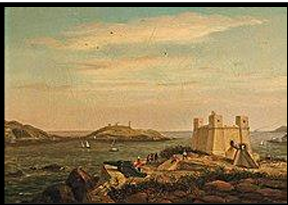
What this picture represents
Wignacourt Tower protecting the coast of St. Paul’s Bay, which appears uninhabited.
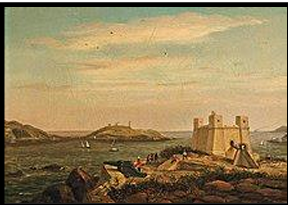
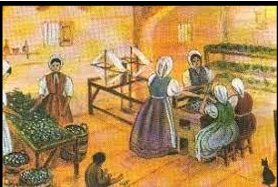
What this picture represents
The cotton industry was essential in the Middle Ages. It continued during the Knights’ Era but stopped during the British period.
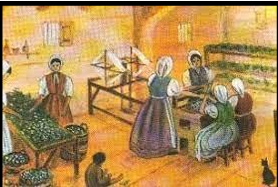
Socio-Economic Factors that affected Demography in the Knights & British Eras
Demography in the Knights’ era changed,
The Areas around the Grand Harbour developed because of employment in the corso and dockyard and the protection they offered. These areas were: Isla and Bormla, Valletta, Floriana, and Paola. The internal migration towards the harbours led to many small villages being abandoned. This process continued also in the British Period.
New suburbs like Marsa and Fgura continued to develop.
The Cottonera was over-crowded and this led to diseases and epidemics to spread faster.
Public transport led to the development of areas across its route like Ħamrun, Birkirkara, Attard, Qormi, Mosta, which became more urbanized.
Where public transport was not frequent like Dingli, Mġarr, Safi and Għargħur the areas remained more rural.
After the Second World War there were other demographic changes,
The Cottonera lost its importance, since the destruction of war led to its residnets to move to other villages.
Areas that before were completely rural like Sliema, St. Julian’s, Ta’ Xbiex began to develop at a high rate since they became tourist areas.
Positive Socio-Economic Effects on Demography
Better standard of living with jobs offering good wages.
Development of infrastructure, new roads, water and sewage systems
Services and shops, supermarket, factories hotels, restaurants etc
Incentives & schemes for people to mend and restore houses in the town & village centre.
Negative Socio-Economic Effects on Demography
Urbanization led to aire pollution, a lot of noise and traffic.
A lot of empty houses.
Increase in the price of land and property led to a change from villas and terraced houses to something smaller and more affordable like apartments.
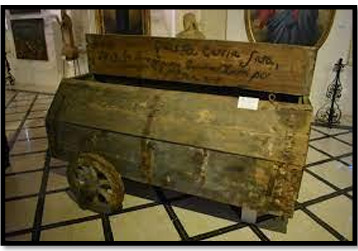
What this picture represents
The Plague cart was used to carry plague victims to cremation.
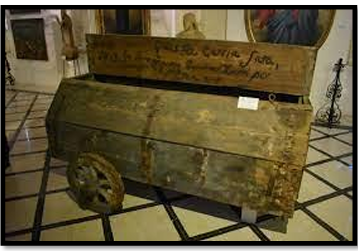
The Increase in Population in the British Period
High birth rate - The Catholic Culture led many to have a lot of children, lack of edication and family planning also led to an increase in birth rate.
Cure for many illnesses - Many cures were found for deadlu deseases like plague, cholera and undulant fever and progress in medicine Ied to high life-expectancy.
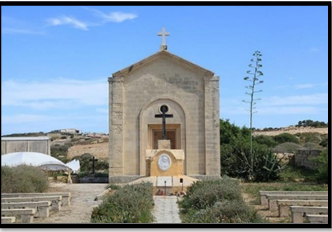
What this picture represents
The cemetry of the Infected, Kalkara, were Cholera victims are buried.
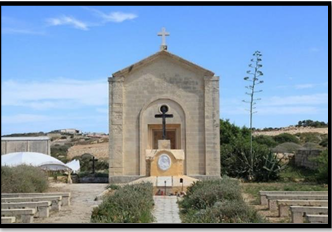
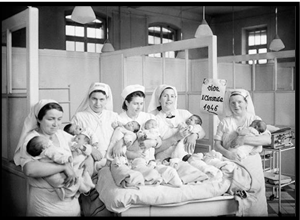
What this picture represents
The Baby Boom after World War II was a phenomenon spread across Europe. That generations remained known as the 'Boomers'.
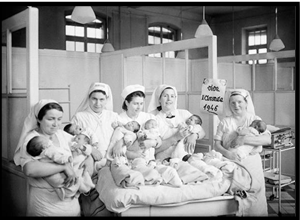
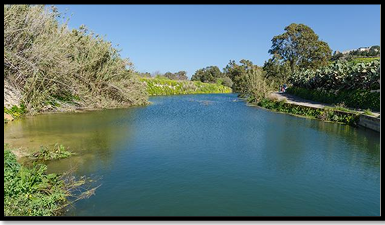
What this picture represents
Chadwick Lakes, in Wied il-Qlejjgħa, were made by Charles Chadwick to collect rain water and have adequate water supply.
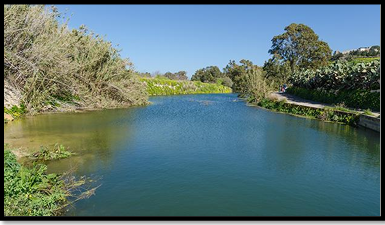
Increase in Population from 1945 to Present Day
Baby Boom - after the Second World War there was an increase in marriages that led in an increase in birth rate.
Emigration - many of the Maltese emigrants returned to Malta when they retired, foreigners immigrated to Malta after Independence and when Malta joined the European Union because of job opportunities and job mobility, today the increase in population is mainly due to TNCs that come to Malta to work.